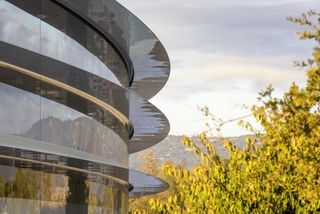Apple University VP offers inside look at Apple's organizational structure

What you need to know
- Joel M. Podolny, VP of Apple University, has published a piece in the Harvard Business Review.
- The piece details on how Apple is structured internally.
- It also talks about how Apple promotes and the qualities leadership needs.
Joel M. Podolny, the dean and vice president of Apple University in Cupertino, California, has published an in-depth look at Apple's organizational structure in the Havard Business Review. The article offers a rarely seen look into how Apple organizes its business to promote innovation.
For instance, one part talks about how, when Steve Jobs returned to Apple in 1997, he laid off every General Manager across the companies different divisions and brought the entire company under one P&L.
When Jobs arrived back at Apple, it had a conventional structure for a company of its size and scope. It was divided into business units, each with its own P&L responsibilities. General managers ran the Macintosh products group, the information appliances division, and the server products division, among others. As is often the case with decentralized business units, managers were inclined to fight with one another, over transfer prices in particular. Believing that conventional management had stifled innovation, Jobs, in his first year returning as CEO, laid off the general managers of all the business units (in a single day), put the entire company under one P&L, and combined the disparate functional departments of the business units into one functional organization.
It talks about how, because of the way the company is still set up, Tim Cook is the only employee where "the design, engineering, operations, marketing, and retail of any of Apple's main products meet."
The adoption of a functional structure may have been unsurprising for a company of Apple's size at the time. What is surprising—in fact, remarkable—is that Apple retains it today, even though the company is nearly 40 times as large in terms of revenue and far more complex than it was in 1998. Senior vice presidents are in charge of functions, not products. As was the case with Jobs before him, CEO Tim Cook occupies the only position on the organizational chart where the design, engineering, operations, marketing, and retail of any of Apple's main products meet. In effect, besides the CEO, the company operates with no conventional general managers: people who control an entire process from product development through sales and are judged according to a P&L statement.
According to the piece, anyone in a leadership role at the company must possess the following three characteristics:
- Deep expertise
- Immersion in the details
- Willingness to collaboratively debate
Apple's organizational structure has led it to grow from "8,000 employees and $7 billion in revenue in 1997, the year Steve Jobs returned, to 137,000 employees and $260 billion in revenue in 2019." It is a truly fascinating look into one of the world's most inspirational companies. You can read the full article on the Harvard Business Review.
Master your iPhone in minutes
iMore offers spot-on advice and guidance from our team of experts, with decades of Apple device experience to lean on. Learn more with iMore!

Joe Wituschek is a Contributor at iMore. With over ten years in the technology industry, one of them being at Apple, Joe now covers the company for the website. In addition to covering breaking news, Joe also writes editorials and reviews for a range of products. He fell in love with Apple products when he got an iPod nano for Christmas almost twenty years ago. Despite being considered a "heavy" user, he has always preferred the consumer-focused products like the MacBook Air, iPad mini, and iPhone 13 mini. He will fight to the death to keep a mini iPhone in the lineup. In his free time, Joe enjoys video games, movies, photography, running, and basically everything outdoors.
Most Popular



